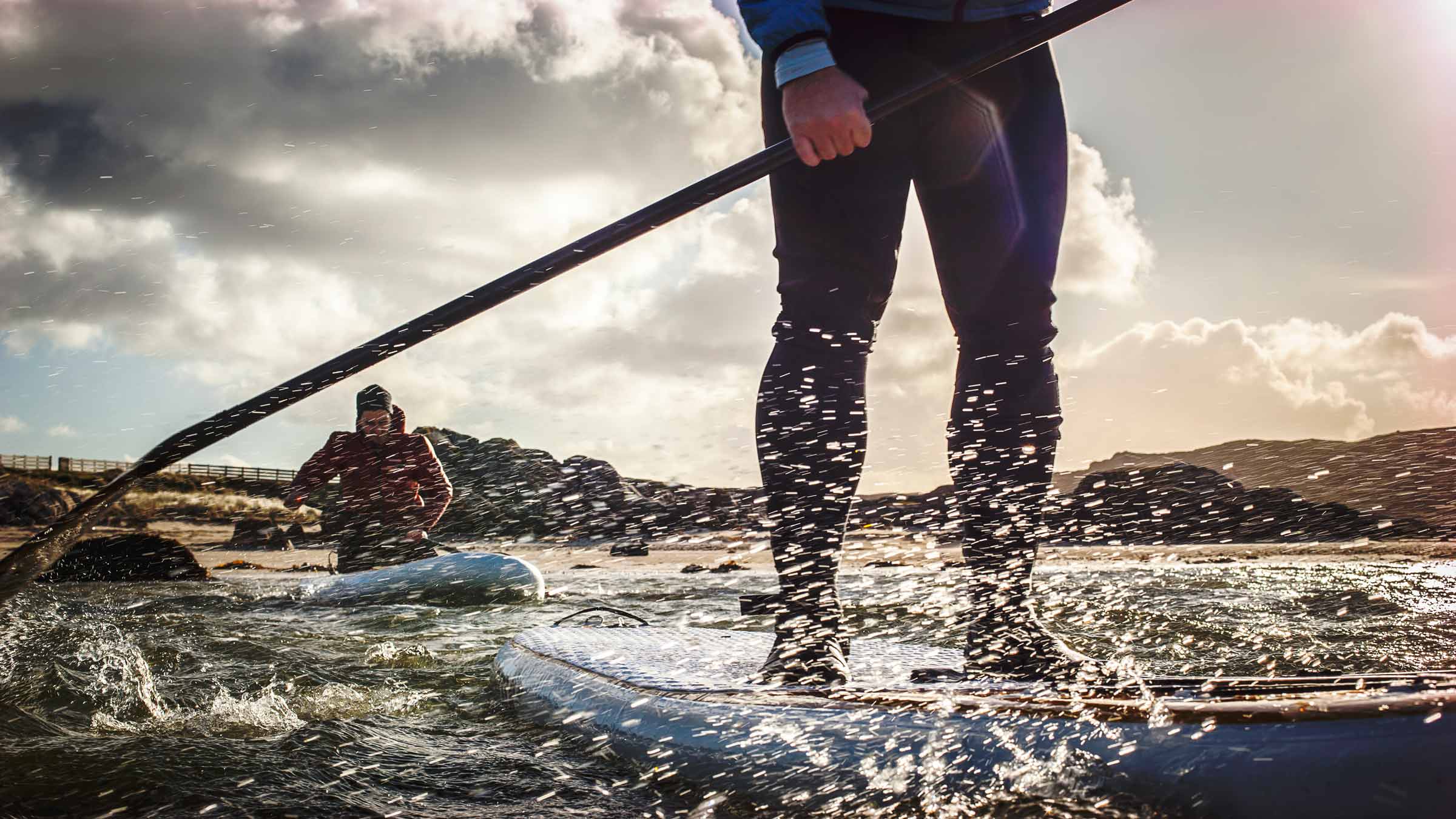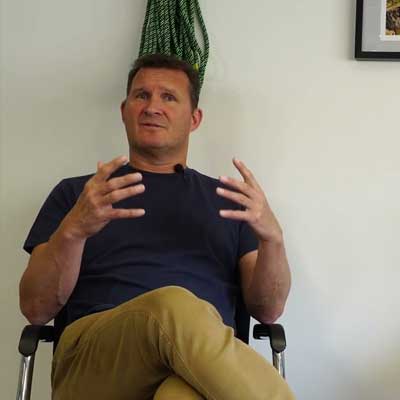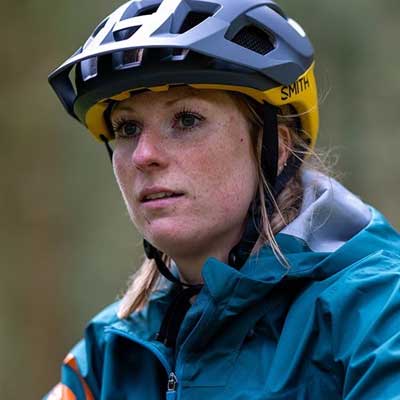

Beginners Guide To Paddleboarding
Stand-Up Paddleboarding (SUP) is one of the fastest growing watersports, combining the physical exercise and exploration of traditional paddle sports with a simplicity that makes it a sport accessible for everyone. We're big fans of paddleboarding and have been selling and hiring them for several years. This season, we sat down with our most experienced paddlers to put together the ultimate beginners guide to this great new sport.
What Is A Stand-Up Paddleboard?
Stand-Up Paddleboards (SUPs) are flat boards around 8-12 feet long and 28-34 inches wide. Many modern models are inflatable, which makes them easy to store and transport - a great advantage over the traditional canoe or kayak. SUPs look much like surf boards but are far more stable. When on a board, you can easily move around without the board tipping precariously. This makes the SUP ideal for exploring on flat water, and can even be loaded up with gear for longer trips. They're also good on moving water or surf and can be a fun way of exploring coastlines.
The inflatable nature of most modern SUPs means they pack small - ideal for travelling. However, they certainly aren't like a holiday lilo. Strong materials and a chambered construction makes the boards extremely robust and stiff when inflated. Our Red Paddle range have been heavily tested to make sure they stay airtight - you won't puncture these boards during normal use. The boards themselves are inflated and deflated with a large hand pump and fit into large holdall style bags for easy transport and storage.
Is It Good For Me?
In a word: yes. Paddleboarding is a great all round workout, requiring strength in your arms, core and legs. It's not a sport where you need to be super fit to participate, but the exercise itself is great for building strength and burning calories. It's also a low impact sport: you're unlikely to strain or injure yourself when paddleboarding.
It's also a great way of relaxing, whether on your own or with friends and family. A typical board is big enough to carry a child or dog too, or even practice yoga out on the water. Our Aviemore store are hosting a Pups on SUPs event this summer as we see more and more people taking their dogs out on to the water with them. Well being is very much in mind as well as body, and paddleboarding ticks both boxes.
Equipment
The Board | Obviously the board is the main piece of equipment, and the part you need to get right. Boards come in a variety of lengths, widths and shapes to suit different paddling styles. Shorter models are more manouverable - great for playing in surf. Longer models hold a line better when paddling, so for travelling any distance this is a huge benefit. Likewise, a long V-shaped front helps you travel easier while a rounder front is more agile. Fortunately there are plenty of all rounders which can turn their hand to anything.
Construction is also something to bear in mind. There are a range of boards on the market anywhere from £399 to £1200. It's well worth investing in a model with a proven record of reliability. Our range topping Red Paddle boards are renowned in the industry for their durability, and 2 year warranty. Whether you want a board to play around on at the beach, or to explore waterways near and far, it's always worth investing in a board that lasts.
The Paddle | You won't get far without a paddle. Paddles come in a variety of materials (plastic, aluminium, wood, carbon fibre, etc) and all have uniquely shaped blades and handles, as well as coming in different lengths. For size, typically choose a paddle around 6 to 10 inches taller than you. For more agile paddling (e.g. in surf) err on the shorter side, and for longer distance paddling, err on the long side. The blade is often built at a slight angle to the shaft to create more forward momentum at each stroke.
Leash | A leash keeps your SUP attached to you with a velcro strap typically placed around your ankle. In the event of you falling into the water, winds can quickly sweep your board away from you. With the leash attached, it's always to hand, and functions as a large flotation device.
Personal Flotation Device (PFD) | As with most watersports, a PFD is essential safety kit. Low profile models like the Palm Universal or Helly Hansen Rider work really well without being too cumbersome. There are many safety options for watersports so it's well worth talking with one of our store experts to find the solution that suits and fits you best.
Clothing | This really depends on how long you plan to be on the water for, and the weather. If you think you're likely to get wet by falling in, it's well worth investing in a wetsuit - nothing else will keep you as warm when you get wet. Saying that, there's nothing to stop you wearing a warm jacket while paddleboarding.
How To Stand On A SUP
- Move the board into enough water so that the rear fins do not touch the bottom.
- Climb onto the board on your knees and use your paddle to take a few strokes on each side to move off.
- Slowly place one foot flat, then stand up with your feet in the middle of the board lengthways, around shoulder width apart.
- Keep your knees slightly bent and your core centered over the board.
How To Paddle
At the most basic level, your paddle is a lever. Your top hand is the driving lever bringing the power to the stroke, while your lower hand is the pivot point and guides the stroke. Have a look at this great video from Red Paddle to see exactly how it's done.
Where Can I Use My SUP?
In Scotland we are extremely lucky ot have some of the best access rights in the world, and this extends to water too. In short, the Land Reform (Scotland) Act provides a statutory right of access to most land and water. However, there are some considerations:
The key principles for access are: care for the environment; take responsibility for your own actions; respect the interests of other people.
Can I Try One?
You can hire a SUP from most of our stores throughout Scotland, including Aberdeen, Aviemore, Edinburgh, Glasgow, Inverness and Perth. This means you get a board, paddle and all the essentials for up to 7 days. 3 day hire is just £75 and we'll show you exactly how to get your board inflated and set up. Contact our stores for more information, or visit out hire page.
- Respect the rights of other water and land users. Watch out for anglers, sailors and commercial industry.
- Consider the saftey of your chosen location. Stay away from intakes for hydroelectricity, or fish farms, etc.
- If you encounter an angler on a river, try to stop upstream and enquire where it is safe for you to pass.
- On the sea, beware of the tides and access areas which may change with the tides.
- When accessing any body of water, try to limit damage to the surrounding land. Use a public slipway if possible.
Share your best pictures of adventure and exploration with us on Instagram! If you've been walking in Scotland, or hiking in Canada, cycling in the Alps or kayaking in South America, share all your images with us at #mytiso
Tiso Instagram HomeCamping At Tiso
We. Love. Camping.
Since Tiso opened its doors in 1962 we've been researching, testing & selling the best tents from the very best brands. It's the part of the outdoors we love the most. Pop into any of our stores to get expert advice from our knowledgable staff, and shop the best range of camping kit in the UK.
Photo by Rachel Keenan | rkeenanphotography.com | IG
See Our Camping Range







